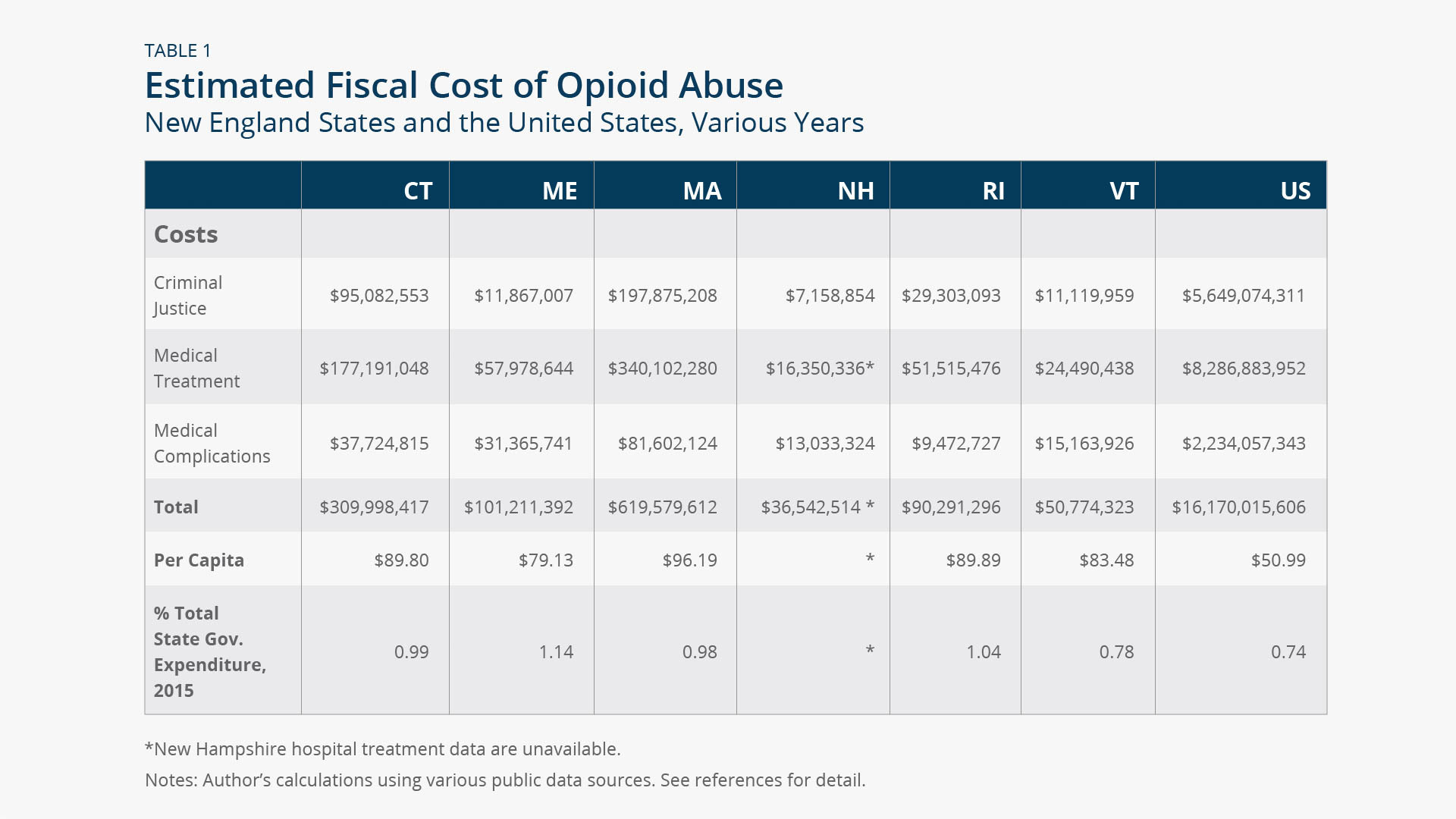The Fiscal Impact of the Opioid Epidemic in the New England States 
The rise in the abuse of—and addiction to—opioids and the rapid increase in the number of fatal overdoses in recent years have made the opioid epidemic a priority for local, state, and federal policymakers. Understanding the epidemic’s direct fiscal impact is key to acknowledging its scope and magnitude. While opioid abuse has many direct and indirect fiscal costs, few studies quantify them. This report assembles available data on the impact of opioid epidemic on criminal justice, treatment, and related health expenditures in the New England states.
The research finds that state governments in the region spend a higher percentage on total opioid-related costs and more per capita than the national averages. Across the region, treating opioid-use disorder—on both an emergency and a long-term basis—accounts for the majority of the costs. Estimates for medical treatment expenditures associated with opioid abuse reach as high as $340 million annually in Massachusetts alone.
While providing new insight the author acknowledges that the costs considered in this policy report are incomplete. It’s plausible that the opioid epidemic’s impact on state revenues is also significant and could affect regional fiscal health. For example, individuals incarcerated for drug crimes or in residential treatment programs are not earning wages. Evidence also suggests that non-institutionalized individuals abusing opioids are more likely out of work than employed, likewise resulting in lost revenue (Krueger 2017). The author plans to conduct further research on opioid abuse’s impact on employment and labor force participation, which should contribute to a fuller understanding of the epidemic’s fiscal cost to the region. However, beyond the fiscal cost is the toll opioid abuse has taken on individuals, families, and communities. The costs analyzed in this report are just a small part of the greater damage inflicted across the region and the country.

 Exhibits
Exhibits




